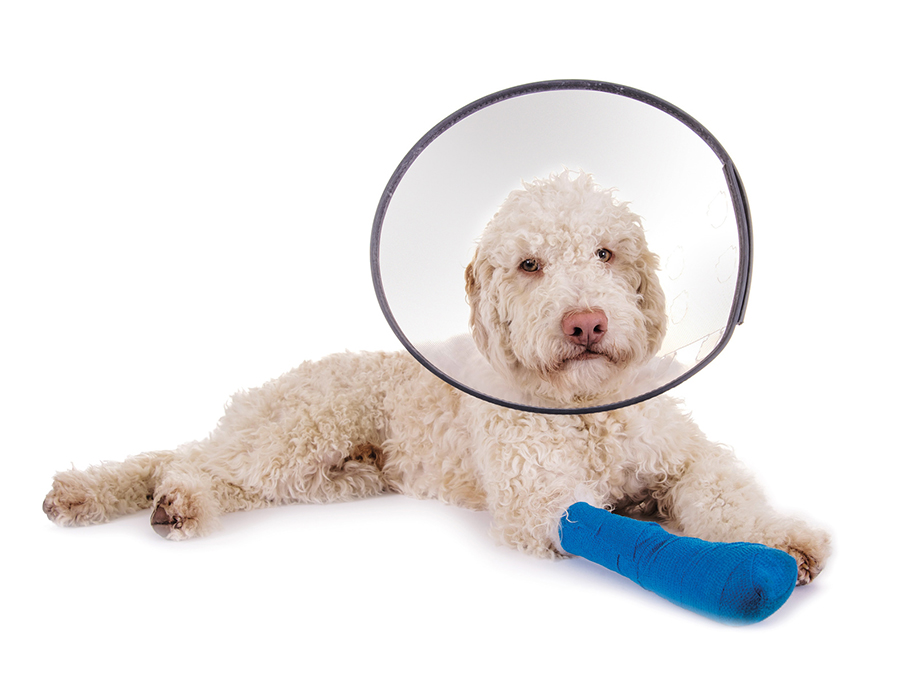Sterilisation and Your Pet
Surgical sterilisation (ovariohysterectomy and castration), is the most common procedure performed on pets today. This handout has been put together to address some of the most common questions as well as provide some information surrounding the procedure and anaesthesia.
Female sterilisation involves removal of the ovaries and uterus. This is done through an incision just behind the umbilicus (belly button). The procedure is recommended at 6 months of age in all cats and most small to medium breed dogs. In large and giant breed dogs (adult weight >35kg) we recommend the procedure at approximately 12-14 months of age. It can still be done at 6 months of age in these dogs, however, the recommendation at a slightly later age allows ligaments, tendons and bones to develop fully.
Castration involves removal of both testicles through an incision just in from of the scrotum for dogs and over the scrotal area in cats. Both procedures require a complete sterile surgical approach. Cats undergoing castration do not have sutures placed in the skin in the scrotal area. The procedure is done at 5-6 months in most pets. In large and giant breed dogs (>35kg) we advise the procedure be done after 16-18 months of age. Once again, castration can still be done at 6 months in these dogs, however, testosterone does affect skeletal and muscle development - hence the recommendation for a later age.
Pain Control
Pain control in our hospital is one of our most important quests and studies have shown that by controlling pain efficiently, recovery and healing are faster and improved. This is achieved with a premedication injection (given prior to anaesthetic) which contains a morphine-like drug called Methadone. The duration of action of the Methadone is approximately 4-6 hours. Because drugs belonging to the morphine group are one of the most effective at controlling pain and in our pets, the safety range of these drugs is so much higher than their use in human medicine, they make an ideal choice for controlling pain before and after surgery. We then also use a second injection of Methadone prior to discharge. Using a combination of medication post-surgery is considered the gold standard for controlling pain, and to this end, we use a non-steroidal anti-inflammatory drug (given as an injection and then dispensed as tablets or liquid for a few days post-operatively).
Price
The price of our sterilisations includes:
- A full clinical exam prior to anaesthetic
- Premedication drugs and administration
- Intravenous catheter placement
- Intravenous fluids
- Anaesthetic induction and maintenance on gas anaesthesia throughout
- Full anaesthetic monitoring including respiration, heart ECG, capnograph, SPO2 (pulse oximetry), blood pressure and temperature
- Surgical sterilisation procedure
- Intra-operative pain relief
- Sterilisation tattoo placement (if requested)
- Intradermal self-dissolving sutures for castrations
- Suture removal + post-operative check-up for female sterilisations
The price does not include:
- Pre-anaesthetic blood tests
- Microchipping or vaccinations
- Other conditions requiring treatment at the time of sterilisation
Admission
On the day of your pet’s surgery, they will need to be admitted into hospital for the day. This process generally takes 10-15 minutes and is done by one of our nursing staff. We do require a consent form to be filled out and signed for each surgical procedure. It is vital that the correct contact details for the day are checked and filled in. The nurse will take some time to go through the procedure and any other items that may accompany the surgery. These include:
- Vaccination/ deworming
- Micro-chipping
- Sterilisation
- Tattoo placement
- Pre-anaesthetic blood tests
Pre-anaesthetic blood testing
A full physical exam is done on your pet by one of our vets, prior to anaesthesia. There is always a possibility that a physical exam alone will not identify all of your pet’s health problems, so we recommend a pre-anaesthetic profile for all pets to be performed prior to anaesthesia. These blood tests are very similar to what your own doctor would run if you were to undergo anaesthesia yourself. We generally can run these on the same day your pet’s anaesthetic is scheduled.
Reasons to test:
- To assure proper kidney and liver function; as they are primarily responsible for anaesthetic metabolism in the body
- To assure adequate oxygen carrying capacity of the red blood cells
- To ensure adequate platelet levels for blood clotting
- To identify “early warning” signs of major blood and organ dysfunction
It is important to understand that a pre-anaesthetic profile does not guarantee the absence of anaesthetic complications. It will however reduce the risk of complications as well as identify medical conditions at an earlier stage.
Intra-operative intravenous fluid therapy
ALL of our sterilisations INCLUDE intravenous fluid therapy during the procedure. This is in order to:
- Support the liver and the kidneys by preventing a fall in regular blood pressure, this can be more common in an older patient
- Maintains blood pressure throughout the anaesthetic. Up to 80% of all patients undergoing a general anaesthetic will experience a significant drop in blood pressure that could be detrimental to organ function.
Discharge
Your pet will be discharged on the same day, later in the afternoon. Recovery from newer generation anaesthetics is far quicker, and in all likelihood, your pet will be walking and running! It is imperative that you try and keep him/ her as quiet as possible to prevent problems occurring at the wound site.
Complete discharge instructions will be given in written form when you pick your pet up from our hospital.
We do request that an Elizabethan collar is placed on your pet to prevent self-trauma to the wound and sutures.
Should there be any problems, please do not hesitate to contact one of our team.




